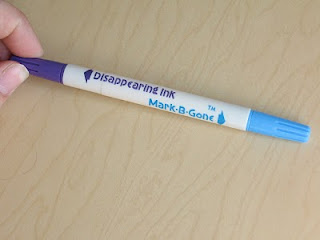I recently made a ironing board cover for a friend. I loved how easy it was and thought it would make a great tutorial for a quick and easy project. The best thing is you can easily customize these directions to any size of ironing board!
This is what you will need:
Cotton Fabric
Cord (I used #2 Polyester Cord--for window coverings)
Cord Stop (just one)
safety pin
Basic sewing supplies
To determine the amount of fabric you will need measure the length of your ironing board and add 13. My board is 54".
54+13= 67"
Of those extra 13 inches, eight will be for wrapping around the board and the other five are for shrinkage/fraying that will occur when laundered (wash/dry before you begin).
Because I wanted to use more of this fabric for future projects I just got 2 yards (72").
Lets get started...
Lay your fabric right side down on the ground. Put your ironing board on top of it. Mark 4" around the board with dots. Play a little game of connect the dots to get the line you will cut along. If you decide you want the cover to wrap around your board less, that is completely up to you. I would just suggest not cutting the fabric any less than 3" wider than the board.
If you have a serger you can use it instead of cutting with scissors. This will eliminate the need to double fold when sewing.
I really like this fabric marker!
Now cut it out. You will need to replace your current ironing board cover and pad for this project.
(you might notice my board is missing its legs. my son used it as a pretend surf board one day. he was fine, but it didn't end too well for the board.)
Fold the edge of your fabric 1/4". Press with your iron. Determine where the center top is of your fabric. This is where you will thread the cord though. You only need to leave about 1" for the opening so stitch this 1/4" fold down about 3-4" in the top center. Backstitch at both ends. This will reinforce this area and keep it from fraying later.
If you have an overlock stitch (#3 and #8 are two types of overlock stitches) on your machine, you can sew around the edge of your fabric using that stitch instead of turning it under 1/4".
Now fold it under 3/4" and pin (make sure it is wide enough for your safety pin to go through). You wont need to pin as frequently on the straight sides as you do on the curves. Press it if you like or just remove the pins when you get to each one (be careful not to break any pins or your needle).
See how I have two pins next to each other under my presser foot and than two pins next to each other behind the presser foot? I did that so I remembered to leave an opening for the the cord. DONT stitch between the two sets. Use a straight stitch as you sew around the board cover. Stitch along the fold or along the inside of the serged/overlock stitch. Backstitch at the beginning and end.
FYI, the curved areas of your fabric will pleat a little when stitched in place. It will not lay completely flat when turned under.
To determine the amount of cord you need, measure around the edge of your cover and add 15. My cover measured 145".
145+15= 160"
Thread your cord onto a safety pin. Insert it into the area you left unstitched at the top of the cover and thread it through. Thread cord ends through your cord stop. Secure your cord ends so they don't fray.
145+15= 160"
Thread your cord onto a safety pin. Insert it into the area you left unstitched at the top of the cover and thread it through. Thread cord ends through your cord stop. Secure your cord ends so they don't fray.
Put it on your board and enjoy!
Something about these silly birds makes me happy. The word 'frou-frou' comes to mind. Sounds like something my dad would say.
Those of you with mini boards... Depending on the length of your board and the width of your fabric, you might be able to use the width of fabric to run along the length of your board.
i.e. If your board is 30" long and the width of your fabric is at least 42", this can work. Just keep in mind that the direction of the design on the fabric will run the width of the board, not the length. If the width of your board is 12" you can probably get by with only 2/3 yard.











